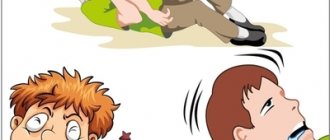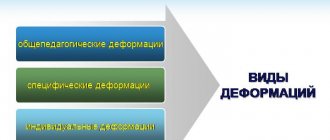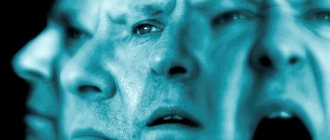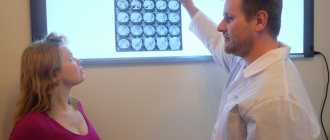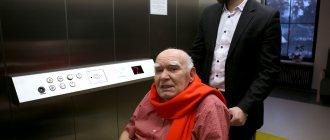Article:
Apraxia in speech therapy is a movement disorder that involves problems with the pronunciation of sounds, syllables and words.
The defect is not caused by muscle weakness or paralysis, but by pathological dysfunction of the brain. The child wants to pronounce a phrase, but the movements of his articulatory muscles are not coordinated.
Apraxia is distributed on a large scale throughout the world. Every year the percentage of children suffering from this diagnosis doubles. Approximately 10:1000, this number of patients are registered with apraxia.
Apraxia - what is it?
Apraxia is a clinical neurological syndrome resulting from damage to the cortical motor control centers. This condition is associated with a profound impairment in planning and reproducing precise movement patterns. Under normal conditions, these patterns are formed under the influence of repeated kinesthetic and kinesthetic-visual stimulation. Sensorimotor stimulation is an ordered system that is reflected in the cerebral cortex and creates a dynamic chain pattern of movements in it.
Thus, a person suffering from apraxia finds it difficult to perform motor activities, despite the correct understanding and presence of the motor and sensory functions of the peripheral nervous system. Classic motor apraxia may involve an inability to repeat simple gestures, such as sticking out the tongue, or difficulty with precise actions, such as hammering a nail, lighting a cigarette, or combing hair.
Diagnosis of the pathological condition
Who diagnoses the disease? To assess speech development, an audiologist is involved, who must assess the condition of the hearing organs and exclude this factor as the cause of the disorder. The speech therapist checks the characteristics of oral speech, motor skills, and melody. Oral-motor assessment criteria:
- checking the muscle tone of the speech apparatus;
- development of coordination;
- orderliness of muscle movements.
The specialist observes the patient while performing speech therapy tasks and in functional situations. The test of melody lies in the ability to change intonation and pauses. An important criterion for speech development is the patient’s ability to conduct a dialogue, to the extent that what he says is understandable to others.
Making a diagnosis begins with studying the medical history and analyzing the patient’s complaints. Primary attention is paid to the articulation of the eyelids, the ability to perform simple everyday actions (for example, unfastening and fastening buttons). Already visually, a specialist can guess the specifics of the disorder. Apraxia is confirmed instrumentally after hardware diagnostics of the brain.
Apraxia: causes
Apraxia is caused by damage to the brain centers responsible for complex motor activity. Primary apaxia may result from delayed or completely abnormal development of the central nervous system in utero. Apraxia in children is the most common type of primary apraxia, and its causes include inborn errors of metabolism, as well as perinatal and genetic factors that damage brain structures. Secondary apaxia, unlike primary, develops in people who have not previously had neurological disorders. The secondary form of apraxia or acquired apraxia occurs as a result of:
brain tumors that compress and destroy nervous tissue hemorrhagic or ischemic strokes (post-stroke apraxia) neurodegenerative diseases and dementia syndrome (apraxia in Alzheimer's disease) brain injury
What does it look like?
Signs of apraxia:
- lack of skills to control facial muscles;
- difficulty getting dressed (problems with tying shoelaces and fastening zippers);
- lack of coordination skills between fingers and hands (problems arise when drawing elementary elements);
- difficulties in relating the use of objects and the type of activity where they should be used;
- walking disturbances;
- a person cannot step over or go around an obstacle;
- previously absent stoop is noted.
Apraxia - types and symptoms
In neurology, there are several types of apraxia. This division is based on the location of the damaged centers of the brain and the resulting clinical picture of this type of apraxia. Kinetic (motor) apaxia
Motor apaxia occurs as a result of damage to the posterior part of the frontal lobe, the so-called primormotor area.
Motor apaxia causes clumsiness in performing motor activities on the opposite side of the body. This means that kinetic (motor) apraxia of the limbs on the right side of the body will be a consequence of a defect located in the left hemisphere of the brain. A patient with motor apraxia is able to plan a complex motor act, but his movements are uncertain, for example, creating the impression of an unsteady gait (gait apraxia). Kinesthetic apraxia is a special type of kinetic motor apraxia, but in this case the problem affects the entire body rather than individual limbs or muscle groups. Imaginary motor apraxia (ideomotor apraxia, mixed apraxia)
Ideomotor ability is the ability to repeat the intentional or meaningless gestures of others and follow commands. This type of apraxia is sometimes called mixed apraxia because during its development the patient knows and remembers the plan for complex sequences of movements, but can only perform simple, long-learned actions. Ideomotor disorders include facial apraxia, orofacial apraxia, and eyelid apraxia, which are identified when attempting to pantomime actions or lip movements that imitate words spoken by the examiner.
Ideomotor apaxia results from predominant damage to the parietal lobe. Because of this location, it is often accompanied by other neurological symptoms, most often aphasia, the loss of the ability to speak, and agnosia, the inability to recognize sensory stimuli while maintaining sensory function.
Constructive apraxia (apracognosia)
Structural apaxia is a spatial-visual disorder. It manifests itself in the loss of the ability to draw simple objects (for example, a house) and to build (for example, using blocks). Constructive apaxia defines the inability to make movements in a falsely perceived space.
Imaginary aprasia
This type is accompanied by the diffusion of pathological processes in the cerebral cortex (in Alzheimer's disease, in cerebral atherosclerosis, apraxia after a stroke). Its essence is a chaotic confusion of simple motor components, which makes the patient behave like an indecisive, disorderly person,
Visual aprasia
Ocular (visual) apaxia is the absence or severe impairment of controlled, intentional eye movements. People with this type of apraxia have problems with horizontal rapid eye movements and tracking other moving objects. Ocular apraxia is usually associated with birth defects of the central nervous system and is therefore a common subtype of apraxia in children.
Apraxia of speech
Oral apraxia, like visual apraxia, is often recognized in childhood, when the child begins to speak his first words. The causes of apraxia of speech are still unclear. Its undoubted feature is the lack of initiation and coordination of movements of the jaw (lower jaw, mouth and tongue). A child with apraxia of speech requires intensive speech therapy as soon as possible.
Clinical picture
The disease is characterized by a number of signs at different ages; the diagnosis is made after a comprehensive examination. The main symptoms of apraxia in children:
- lack of babbling;
- the child begins to speak late;
- limited reproduction of sounds with difficulty connecting them;
- replacing phonemes or omitting difficult ones to pronounce.
After the speech formation period, errors in sequence may occur less frequently. Imitation is difficult for a child, but in this case it is easier to understand him. Short phrases are easier for him. As with stuttering, anxiety makes communication difficult. As a result, a complex of deviations leads to delayed language development, memory impairment, and difficulties with fine motor skills. Other problems include oral sensitivity, which may cause your child to not like brushing their teeth or chewing crunchy foods. Apraxia also leads to difficulties in mastering written grammar and poor reading.
Despite the initial absence of problems with mental development, children subsequently become aggressive and negative mental changes are noted.
In speech therapy, this term is used in relation to aphasia, cortical dysarthria, and motor alalia. The deviation may be general in nature, affecting only oral, articulatory or spatial characteristics.
General apraxia is characterized by the inability to coordinate hand movements and, as a result, the inability to use objects for their functional purposes. In the oral form of the pathology, the muscles innervating the speech organs do not move. Apraxia of speech is manifested by incorrect reproduction of sounds: there are various errors in their pronunciation and problems with phonemic perception. In the monotype, apraxia is rare; it is characterized by a mixture of manifestations.
Differences in the course of pathology in adults and children
The child makes more mistakes when speaking, but the neurological symptoms are not clearly expressed. At the same time, the causes of apraxia in older people are injuries and brain tumors, circulatory disorders, which casts doubt on the diagnosis itself. If we are talking about a congenital pathology, doctors assume its hereditary nature, and a theory is developed about an anomaly in chromosomes and a violation of metabolic processes.
Apraxia of speech is considered a motor speech disorder. What other symptoms should you pay attention to? Patients with apraxia have a stiff gait and small steps; it is difficult for them to perform ordinary daily activities: getting dressed, making the bed, combing their hair, etc. This is not necessarily a feature of apraxia, but consultation with specialists is necessary.
Classification of apraxia by type of reaction to internal and external stimuli (A. R. Luria):
- kinesthetic form - lack of connection between body position and movement; for example, due to the fact that the patient does not feel the position of his fingers, he cannot show how to pour tea;
- kinetic is the absence of automation of actions, pauses occur, human movements are angular;
- the spatial view is associated with a violation of orientation, its subtype is constructive;
- the regulatory form consists of unconscious, uncontrolled actions; it is difficult for a person to coordinate them.
Psychoneurologist G. Lipmann also distinguished ideomotor and ideational forms of apraxia. With the ideomotor type, the patient understands what needs to be done, but skips some actions or does not complete the process. The ideational type is more often found in combination with the regulatory one and is characterized by the fact that a person cannot remember the meaning of performing an action, and subsequently does not control the correctness of his actions. Ideational apraxia differs from ideomotor apraxia in that the patient retains the ability to imitate, which greatly facilitates communication.
Separately, speech therapy deals with eyelid apraxia, the symptoms of which are difficulty opening and closing the eyes. There is no infectious cause for this condition, blepharospasm or damage to the facial nerve. The pathology manifests itself in a one-sided way: it is difficult to open or close the eyelids. As a rule, complications are associated specifically with opening the eyes, so the patient has to wrinkle his forehead, throw back his head, or pull up part of the eyelid with his fingers.
Apraxia: treatment and prognosis
Treatment for apraxia depends on the underlying disease that causes it. In some cases, pharmacological treatment may be helpful to slow the progression of the condition, such as Alzheimer's disease. On the other hand, surgical procedures remove some brain tumors. Regardless of the etiology, every patient with newly diagnosed apraxia requires observation by a neurologist and neurological rehabilitation with an emphasis on specific movement disorders.
The prognosis of apraxia depends on its cause and type. Primary apraxia, congenital in very young children, requires comprehensive care and rehabilitation, which can stop the progression of the disease. Secondary apaxia requires prompt identification of the trigger factor. Some causes are reversible (eg, early diagnosis of a brain tumor), but the vast majority cause irreversible neurological loss.
Benefits of rehabilitation in
Extensive experience and attentiveness allow our specialists to find an approach to patients and select optimal rehabilitation methods in a particular case. We believe that there can be no trifles in medicine: our center employs only competent, qualified specialists (from administration staff and nurses to doctors), we use new, modern and at the same time proven effective equipment and techniques, we adhere to an individual and multidisciplinary approach, our psychologists and psychotherapists are always ready to help patients cope with depression and accept new living conditions. We also thought through the architecture of the center: wide doorways, threshold-free anti-slip coating, ramps and handrails are especially important for people with disabilities.
We want your well-being to not depend on circumstances!
Visual support and speech generating devices
Your speech-language pathologist may recommend using an assistive communication method, such as visual aids (picture cues) or a tablet with voice-generating software. We know from experience that this approach seems wrong to many parents. They may worry that support through pictures or a speech-generating device will begin to replace the child's speech and stunt its development. The good news is that research shows just the opposite.
Alternative communication methods encourage the development of oral language. This may be because they provide the child with opportunities to interact with others while he works on his language skills. In our practice, we often see how the connection between a picture and a word helps nonverbal and minimally verbal children better understand and use words.
Diagnosis and assistance
In order to diagnose the disease, a number of measures are taken:
- analysis of medical history and pathological complaints;
- examination by a neurologist;
- examination by a neuropsychologist;
- Magnetic resonance and computed tomography are performed;
- Often the patient visits the office of a neurosurgeon and psychologist.
In this case, there is no drug treatment, and the drugs are not even able to slow down the development of the disease. In addition, to combat pathology and its consequences, the following actions are carried out:
- blood pressure is monitored
and medications are prescribed that can improve nutrition and blood flow in the brain; - surgery
(tumor is removed).
The specialist who observes the patient draws up an individual plan for a therapeutic program, which involves the following procedures:
- physiotherapy;
- occupational therapy;
- cognitive method of rehabilitation;
- classes with a speech therapist.
Methods of helping with the disease largely depend on the details. For example, the age of the patient, the degree of damage and the nature of the pathology are very important.
Despite the fact that there is no treatment as such today, the above procedures make it possible to at least partially restore functioning. Physiotherapy is the most effective method, as improvements in body functions are observed over time.
Treatment, or rather maintenance therapy, is a rather difficult and lengthy process that requires persistence and patience.
Therefore, you should not delay going to the doctor if you suspect a disease. Depending on the reasons, a referral to a psychiatrist or neurologist will be made.
In addition to the fact that an individual set of restorative and supportive procedures is developed for the patient, he should be surrounded with care. An additional psychologist and nurse will be required, because relatives and a social worker will not always be able to be with the patient.
What to expect from diagnostics
Here are a few manifestations by which speech therapists distinguish apraxia of speech from other disorders:
— Systematic errors in consonant and vowel sounds during the pronunciation of syllables and words. For example, a child pronounces the same words a little differently each time. May be especially noticeable with new words and longer, more complex words.
- Difficulties with the transition from sound to sound and from syllable to syllable. This often results in quite long pauses between sounds and syllables. Because of this, the child may also have difficulty repeating a sequence of words or syllables.
- Unusual accent. For example, a child may pronounce all syllables in a word with the same stress. Instead of the usual “melody” of speech, the child seems to speak strangely. This symptom of apraxia is especially difficult to recognize in autism, as children with autism often have “flat” intonation.
During the examination, the speech therapist will also evaluate oral-motor movements and their strength. This assessment includes movements of the jaw, lips and tongue. The speech therapist may ask the child to swallow, move his tongue, smile, lick a lollipop, and so on to test muscle coordination.
A thorough examination also includes testing of hearing, verbal and nonverbal communication skills, ability to imitate, and response to verbal instructions. The results of such an examination will provide the necessary data to develop a treatment plan for the child.
Diagnosis of apraxia in children with autism
Keep in mind that diagnosing apraxia of speech in a child with autism can be especially challenging. Such a diagnosis will require several sessions, otherwise the child may become too tired. We are usually very careful when diagnosing children who are too young and have severe developmental disabilities because they may become uncooperative in many tasks during the examination. Typically, we need the child to have some speech before we can hear and see the symptoms of apraxia.
It is also important for us to evaluate how the child will react to different techniques. For example, will the child be able to imitate movements when asked? We are particularly interested in whether the child will listen attentively while the therapist models mouth movements? The answers to these questions are very important in creating a therapy program for a child with apraxia and autism.
Gesture prompts
Another approach is to use visual gesture cues. The parent or therapist touches their mouth when they make a certain sound. For example, we can bring our index finger to our lips and move it away when we say the sound "p". The prompt draws the child's attention to how the lips form a certain sound.
We will use more than one clue when we say a whole word to show the difference between the sounds in a word. The combination of visual and verbal cues helps the child focus, understand and pronounce the word better.
This type of prompting can be especially helpful for children with autism, who often tend to be visual learners. However, this method requires that the child can pay attention to the cues and imitate them.
Experts' forecast and likely consequences
Depending on the nature of the pathology that became the causative agent of apraxia, forecasts are made. Therefore, specialists take measures to eliminate the causes of the disease and improve movements performed voluntarily.
Due to the fact that there is no treatment for the disease as such, but only supportive methods, a number of consequences are observed:
- the patient’s quality of life sharply decreases due to the inability to experience certain tactile sensations and body movements;
- self-care is impossible for people suffering from the disease, so constant care is required;
- and of course, there can be no talk of engaging in any type of work.
Apraxia is a type of disease that develops the patient's disability.
